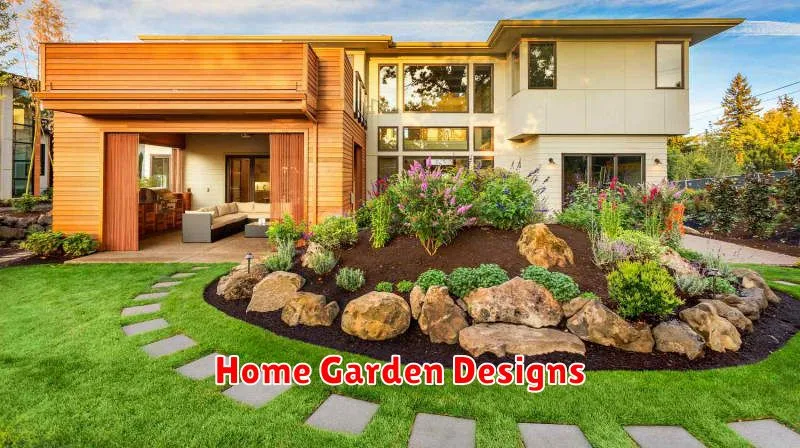Transform your backyard into a vibrant oasis with these 10 home garden ideas! Whether you’re a seasoned gardener or just starting out, we’ve got inspiring designs to elevate your outdoor space. Discover creative ways to incorporate vertical gardening, build a stunning DIY patio garden, or create a tranquil zen garden. Learn how to maximize your small garden space with clever planting techniques and choose the perfect outdoor furniture to complete your personal garden paradise. Get ready to unleash your inner green thumb and create the home garden of your dreams!
Zen Rock Garden
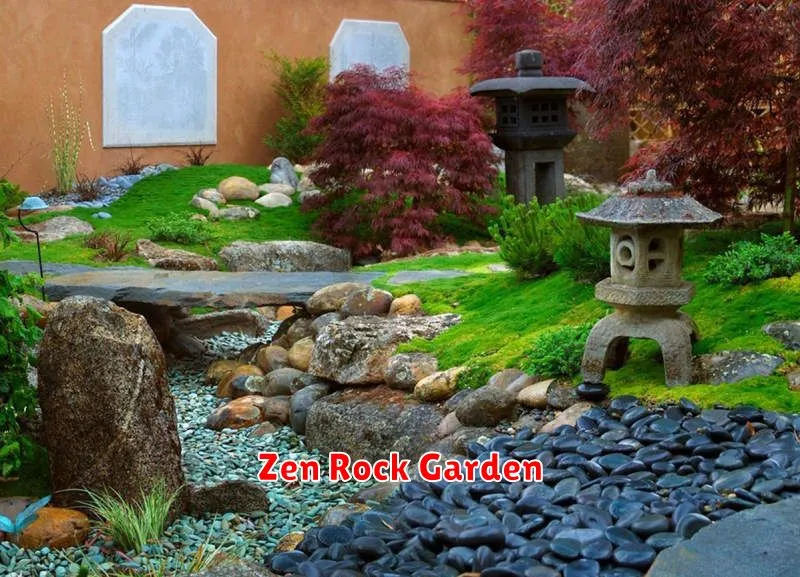
The Zen Rock Garden, also known as the Kiyomizu-dera temple’s Karesansui (dry landscape garden), is a serene and minimalist masterpiece located in Kyoto, Japan. It’s a place of profound tranquility, inviting contemplation and a deep connection with nature.
The garden’s simplicity is its strength. Composed of carefully raked white gravel representing the sea and a few strategically placed rocks, it allows for a vastness of interpretation. The seemingly simple arrangement invites the viewer to engage in a meditative practice, finding peace within the deliberate placement of each element.
The raked gravel is more than just decoration; the meticulous act of raking is itself a form of meditation. The rhythmic movements create a visual harmony that complements the natural beauty of the rocks. The carefully chosen rocks evoke a sense of permanence and strength within the ever-changing landscape.
Visitors are encouraged to observe, reflect, and meditate within the garden’s quiet space. Each visit offers a unique experience, as the interplay of light and shadow, the subtle changes in the texture of the gravel, and the viewer’s own inner state create a continually evolving perception.
The Zen Rock Garden is not merely a garden; it’s a spiritual experience, a testament to the power of simplicity and the beauty of intentional design. It’s a place to find inner peace and connect with a deeper sense of self. It is a must-see for anyone visiting Kyoto, offering a profound and lasting impression.
Vertical Wall Garden
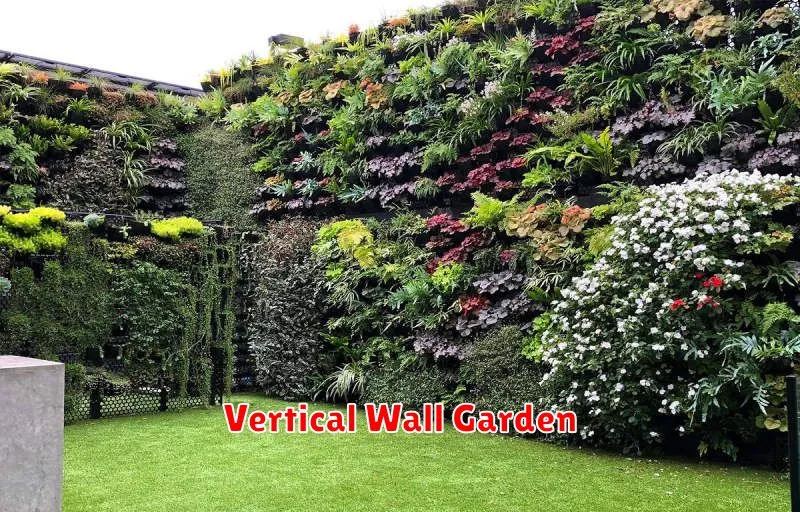
Creating a vertical wall garden is a fantastic way to add greenery to any space, no matter how limited your square footage. Whether you have a small apartment balcony or a large outdoor wall, a vertical garden offers a unique and visually stunning way to incorporate plants into your environment.
The benefits extend beyond aesthetics. Vertical gardens can help improve air quality by absorbing carbon dioxide and releasing oxygen. They can also reduce noise pollution and even help regulate temperature, creating a more comfortable atmosphere.
Planning your vertical garden is key to success. Consider the type of plants you want to grow, their sunlight requirements, and the overall design you’re aiming for. Some popular choices for vertical gardens include herbs, succulents, and trailing plants. You’ll also need to choose the right growing system, which could range from simple hanging planters to more complex modular systems.
Choosing the right materials is another important factor. From the planter boxes themselves to the supporting structure, you’ll need durable and weather-resistant materials, especially for outdoor installations. Remember to consider the weight of the plants and the soil when choosing your structure to ensure stability.
Maintenance is an ongoing aspect of vertical gardening. Regular watering is crucial, especially during warmer months. You’ll also need to monitor your plants for pests and diseases, ensuring they receive the proper care to thrive. Pruning and occasional repotting may also be necessary to keep your vertical garden healthy and vibrant.
With careful planning and consistent maintenance, a vertical wall garden can be a rewarding and beautiful addition to your home or outdoor space. It’s a creative solution for those seeking to bring the outdoors in, even in the smallest of spaces. Embrace the challenge and enjoy the process of creating your own lush, vertical oasis!
Tropical Patio Garden
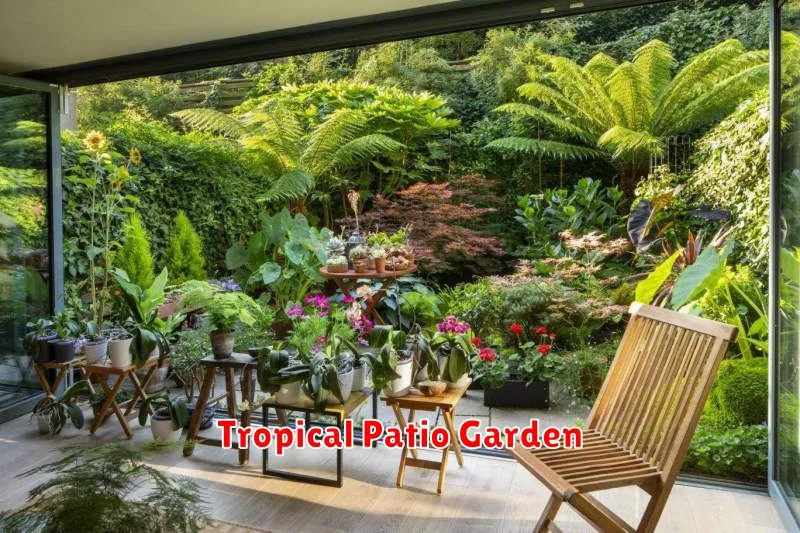
Transform your patio into a lush, vibrant oasis with a tropical garden! Creating a tropical paradise right outside your back door is easier than you might think. With a little planning and the right plants, you can enjoy the beauty and tranquility of the tropics all year round, or at least during the warmer months.
The key to a successful tropical patio garden is choosing the right plants. Look for species that thrive in warm, humid conditions and tolerate some shade. Popular choices include bird of paradise, hibiscus, bromeliads, and various types of ferns. Consider the size of your patio and select plants that won’t outgrow their space. A good rule of thumb is to choose a mix of tall and short plants to create visual interest and depth.
Potting is crucial. Use large, well-draining pots to prevent root rot. A mix of potting soil and perlite ensures proper drainage and aeration. Remember to water regularly, especially during hot, dry periods. Don’t let the soil dry out completely, but avoid overwatering, which can lead to root problems.
To enhance the tropical feel, incorporate decorative elements. Think about adding a water feature, such as a small fountain or birdbath. This will not only add to the aesthetic appeal but also increase humidity, which is beneficial for many tropical plants. Consider using colorful pots, woven baskets, and other decorative containers to complement your plants.
Don’t forget about lighting! While many tropical plants tolerate shade, they still need adequate sunlight. If your patio is particularly shady, consider supplementing with artificial grow lights. Conversely, if it’s very sunny, ensure your plants are protected from intense afternoon sun.
With a little care and attention, your tropical patio garden will flourish. Enjoy the relaxing atmosphere and the vibrant colors of your personal tropical getaway. Remember to research the specific needs of your chosen plants for optimal growth and to create a thriving, beautiful space you’ll love.
Modern Minimalist Garden
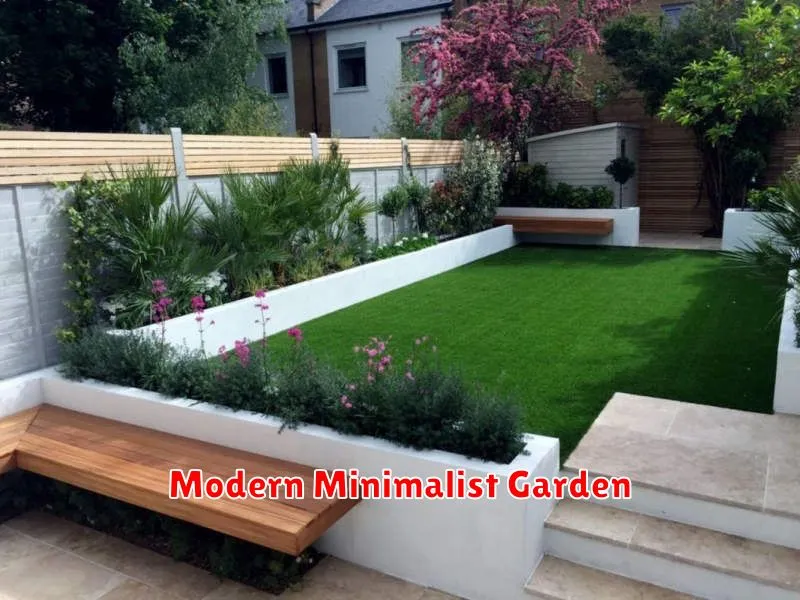
Creating a modern minimalist garden is about embracing simplicity and clean lines. It’s a style that prioritizes functionality and thoughtful design, often featuring a limited color palette and a focus on texture and form.
Key elements of a modern minimalist garden include the use of straight lines and geometric shapes in pathways, planting beds, and structures. Think sharp edges, defined spaces, and a sense of order. Color plays a crucial role; often relying on a muted palette with pops of strategically placed color. Grays, greens, whites, and blacks are common choices, emphasizing the inherent beauty of the plants themselves.
Planting in a minimalist garden is carefully considered. Instead of overflowing with a multitude of species, focus on a few key plants with strong architectural forms or interesting textures. Consider using grasses, succulents, or other low-maintenance plants that require minimal upkeep. Repetition of similar plants creates a sense of visual harmony and emphasizes the overall design.
Materials are chosen for their clean aesthetic. Concrete, stone, metal, and wood are popular choices for pathways, walls, and other structures. These materials offer durability and a sense of permanence, while also complementing the minimalist aesthetic. Simplicity in materials is key; avoid unnecessary embellishments or overly ornate designs.
Lighting is another important element. Incorporate strategically placed spotlights to highlight key features of the garden at night, such as a sculptural plant or a water feature. This adds a layer of drama and creates a different atmosphere after dark. Avoid overly bright or cluttered lighting; instead, opt for subtle and well-placed illumination.
Ultimately, a modern minimalist garden is a space for relaxation and contemplation. It’s a place where you can appreciate the beauty of simplicity and the power of thoughtful design. By focusing on carefully chosen elements and a cohesive design, you can create a stunning and serene outdoor sanctuary.
Rustic Flower Beds
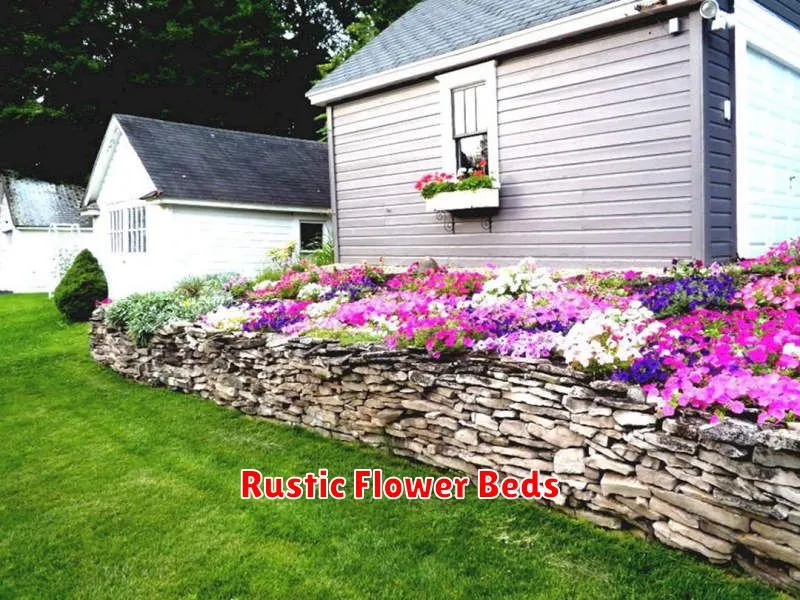
Creating a rustic flower bed is a wonderful way to bring a touch of natural charm to your garden. The key is to embrace imperfection and let nature take the lead. Forget perfectly manicured lines and instead, opt for a more organic, free-flowing design.
Materials play a crucial role in achieving that rustic aesthetic. Consider using reclaimed wood, weathered stone, or even old terracotta pots. These elements add texture and character, enhancing the overall feel of the bed. Don’t be afraid to mix and match different materials to create a unique look. The more varied the textures, the more interesting the final result.
When choosing plants, select varieties that complement the rustic theme. Wildflowers, herbs, and grasses work particularly well. Consider incorporating plants with a slightly unkempt look, such as overflowing roses or rambling clematis. This will add to the natural, untamed beauty of your flower bed.
Color palettes should be carefully considered. Muted tones, such as soft pinks, lavenders, and creams, tend to work best in a rustic setting. You can also incorporate bolder colors sparingly to add pops of vibrancy. The goal is to achieve a natural, harmonious blend of colors that evokes a sense of tranquility and peace.
Placement is also important. Consider where your rustic flower bed will be most effective. A spot near a weathered fence, a stone wall, or even nestled amongst existing trees will create a beautiful and cohesive look. The surrounding landscape should enhance the rustic feel, making the flower bed appear as if it’s naturally grown.
Ultimately, creating a rustic flower bed is about embracing a sense of natural beauty. It’s about letting your creativity flow and allowing the plants to grow freely. The imperfect, the slightly wild, the uniquely textured—these are the elements that create the charm of a truly rustic garden space.
Outdoor Kitchen Garden
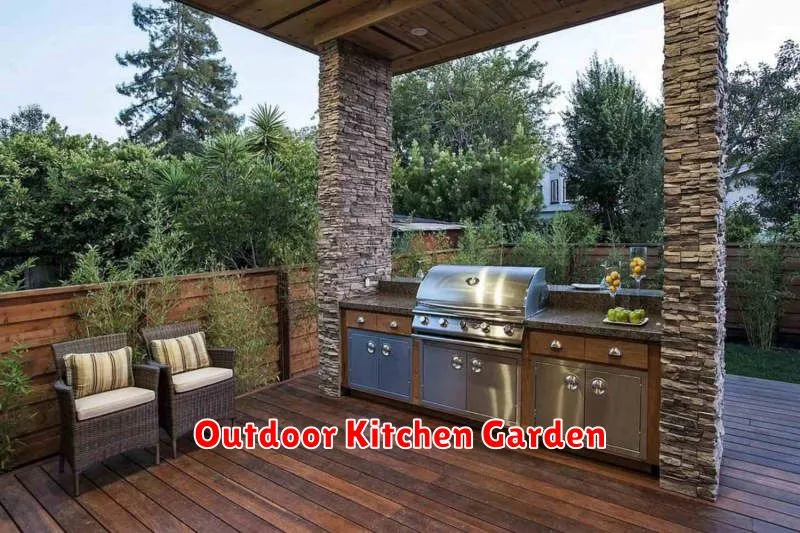
An outdoor kitchen garden is more than just a place to grow herbs and vegetables; it’s an extension of your home, a vibrant space where culinary creativity meets nature’s bounty. Imagine stepping outside to gather fresh ingredients for your next meal, the scent of basil and rosemary filling the air. This is the essence of an outdoor kitchen garden.
Planning your space is crucial. Consider the size and shape of your area, the amount of sunlight it receives, and the types of plants you want to grow. Will you primarily focus on herbs, vegetables, or a combination of both? A well-planned layout will ensure efficient use of space and maximize your harvest.
Choosing the right plants is another key aspect. Select varieties that thrive in your climate and soil conditions. Consider companion planting, a technique that involves planting specific plant combinations to improve growth and deter pests. For example, basil is often planted near tomatoes to repel insects.
Building your garden can be a rewarding DIY project. Raised beds offer excellent drainage and control over soil composition. Alternatively, you can create in-ground gardens, ensuring proper soil preparation and amendment. Remember to install a reliable irrigation system to keep your plants well-hydrated.
Maintaining your garden involves regular weeding, watering, and fertilizing. Pest and disease control is also vital for a healthy and productive garden. Implementing preventative measures, such as crop rotation and companion planting, will help minimize pest infestations.
The rewards of an outdoor kitchen garden are immeasurable. From the satisfaction of growing your own food to the fresh, flavorful ingredients it provides, it enriches your culinary experience and connects you with the natural world. It’s a space where you can relax, unwind, and appreciate the beauty and bounty of nature.
Beyond the harvest, an outdoor kitchen garden adds aesthetic appeal to your outdoor space. The vibrant colors and textures of the plants create a visually stunning backdrop for outdoor dining or relaxation. It’s an investment in both your culinary adventures and the overall beauty of your home.
Water Feature Garden
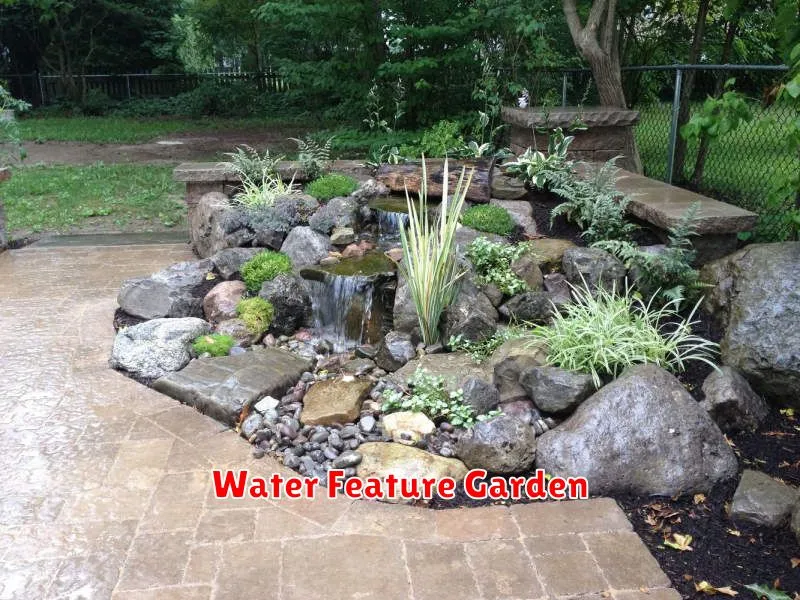
Designing a garden with a water feature can transform your outdoor space into a tranquil oasis. The soothing sounds of flowing water, the shimmering reflections, and the added visual interest create a relaxing and beautiful environment. Whether you’re envisioning a majestic pond, a delicate fountain, or a simple trickling stream, incorporating water into your garden design offers a multitude of benefits.
One of the key advantages is the therapeutic effect of water. The gentle sounds can mask unwanted noise pollution, creating a peaceful atmosphere ideal for relaxation and contemplation. The movement of water also adds a dynamic element, making your garden feel more alive and engaging. Moreover, a water feature can attract a variety of wildlife, enriching the biodiversity of your garden.
The design possibilities are virtually endless. You can choose from a wide range of materials, styles, and sizes to suit your garden’s aesthetic and your personal preferences. A formal pond with meticulously placed plants can create a sense of elegance, while a more naturalistic stream can evoke a sense of wildness and tranquility. Consider incorporating lighting to enhance the beauty of your water feature, particularly at night.
When planning your water feature, it’s crucial to consider practical aspects such as maintenance, water source, and placement. Choosing the right location will ensure that your feature receives adequate sunlight and is easily accessible for maintenance. The size of your water feature should also be appropriate for the scale of your garden. Proper planning ensures a long-lasting and enjoyable addition to your landscape.
Ultimately, a water feature garden is a rewarding investment. It offers both aesthetic appeal and practical benefits, creating a space where you can escape the stresses of daily life and enjoy the beauty of nature. With careful planning and attention to detail, you can create a stunning and relaxing garden that will be enjoyed for years to come.
Succulent Planter Garden
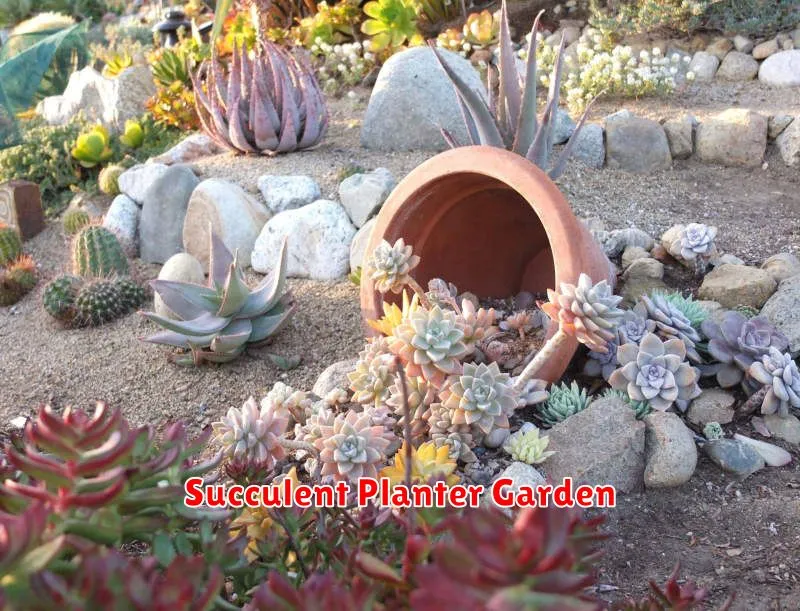
Creating a succulent planter garden is a rewarding project for both experienced and beginner gardeners. These low-maintenance plants offer a wide variety of textures, colors, and shapes, allowing for endless creative possibilities. Whether you prefer a minimalist design or a vibrant explosion of color, succulents can be adapted to suit any aesthetic.
Choosing the right containers is crucial. Terracotta pots are a popular choice, as they allow for excellent drainage, which is vital for succulents. However, you can also use other materials like ceramic, concrete, or even repurposed items. The size and shape of your containers will depend on the size and number of succulents you plan to plant.
Selecting your succulents is where the fun begins! Explore different varieties to find ones that complement each other in terms of color, size, and texture. Consider factors like sunlight exposure and water requirements to ensure your chosen succulents thrive in your chosen location. Local nurseries are a great resource for finding a wide selection of healthy succulents and expert advice.
Preparing the soil is just as important as selecting the right plants. Succulents need well-draining soil to prevent root rot. A cactus and succulent potting mix is readily available at most garden centers. You can also amend regular potting soil with perlite or coarse sand to improve drainage.
Planting your succulents is a straightforward process. Gently remove your succulents from their original containers, taking care not to damage the roots. Plant them in your chosen container, spacing them appropriately to allow for growth. Water thoroughly after planting, but avoid overwatering.
Maintaining your succulent planter garden is relatively easy. Succulents require less frequent watering than other plants, typically only when the soil is completely dry. Avoid overhead watering to prevent fungal diseases. Fertilize sparingly during the growing season with a balanced fertilizer diluted to half strength.
With a little care and attention, your succulent planter garden will thrive and bring beauty to your home or outdoor space for years to come. Enjoy the process of creating a unique and personalized display that reflects your individual style.
Wildlife-Friendly Garden
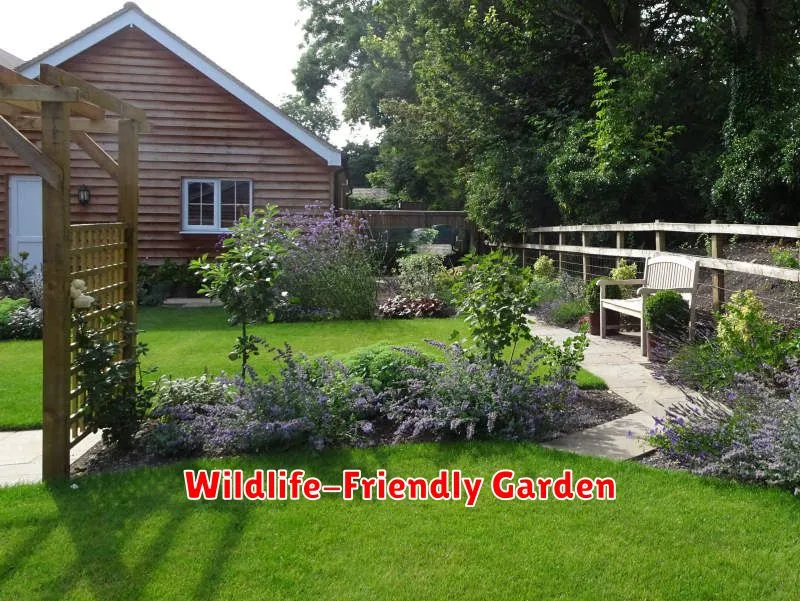
Creating a wildlife-friendly garden is a rewarding experience, offering a haven for local fauna while enhancing the beauty of your outdoor space. It’s more than just planting pretty flowers; it’s about providing essential resources for various creatures, fostering biodiversity, and contributing to a healthier ecosystem.
The key to success lies in understanding the needs of your local wildlife. Research which species are native to your area and what they require for survival. Consider providing food sources like nectar-rich flowers, berries, and seed-bearing plants. Think about incorporating plants that offer shelter, such as dense shrubs, tall grasses, and log piles. Water sources are also crucial; a birdbath or a shallow dish of water will attract a variety of animals.
Plant diversity is paramount. A variety of plant heights and bloom times will ensure a continuous supply of food and shelter throughout the year. Include a mix of native wildflowers, grasses, shrubs, and trees to create a layered habitat. This diverse landscape will also attract a wider range of beneficial insects, such as pollinators, which are essential for a thriving ecosystem.
When planning your wildlife garden, avoid the use of pesticides and herbicides. These chemicals can be highly toxic to animals and disrupt the delicate balance of your ecosystem. Instead, opt for organic pest control methods, such as companion planting and handpicking pests. Consider embracing a more naturalistic approach to gardening, allowing some areas to become slightly wilder.
Remember that creating a wildlife-friendly garden is an ongoing process. Regular monitoring and observation will help you understand which plants are attracting wildlife and which areas need improvement. Enjoy watching your garden come alive with the buzzing of bees, the fluttering of butterflies, and the songs of birds – a testament to your efforts in creating a thriving habitat.
By embracing these principles, you can transform your garden into a vibrant and welcoming space for both wildlife and yourself, enriching your connection with the natural world and contributing to a healthier environment. The rewards are immeasurable, from the beauty of a diverse garden to the satisfaction of knowing you’re playing a role in conservation.
Mediterranean Garden Style
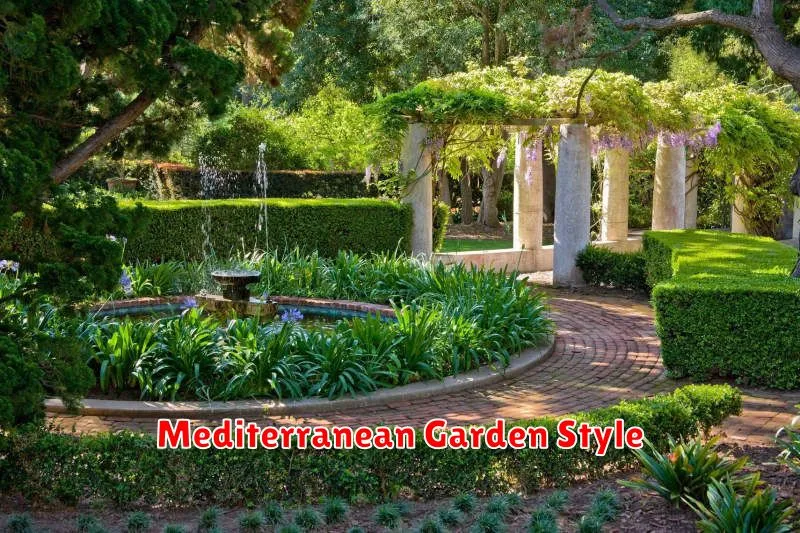
The Mediterranean garden style evokes a sense of relaxed, sun-drenched beauty, inspired by the landscapes of countries bordering the Mediterranean Sea. Think sun-baked earth, fragrant herbs, and the calming presence of water features. It’s a style that prioritizes low-maintenance plantings and a harmonious blend of architecture and nature.
Key characteristics of a Mediterranean garden include the use of drought-tolerant plants, emphasizing textures and colors over a profusion of blooms. Think silvery-leaved shrubs like lavender and rosemary, alongside vibrant bougainvillea and oleander. The color palette often leans towards warm earth tones, punctuated by the bright splashes of flowering plants.
Materials play a crucial role in creating the authentic feel. Natural stone, terracotta pots, and stucco walls all contribute to the overall aesthetic. Winding pathways, often made of gravel or stone, lead the eye through the garden, creating a sense of discovery and exploration.
Water features are a common element, from simple fountains to more elaborate pools. The sound of trickling water adds to the peaceful atmosphere, while also providing a practical benefit in hotter climates. Consider incorporating a small, dry creek bed or a weathered stone birdbath for a more rustic feel.
Plant selection is key to success. Prioritize plants that thrive in hot, dry conditions and require minimal watering. Consider incorporating citrus trees, olive trees, and grapevines for a truly authentic Mediterranean feel. Don’t be afraid to mix textures and heights to create visual interest.
Creating a Mediterranean garden is about more than just planting the right plants; it’s about capturing the essence of the region. It’s about embracing the warm sunlight, the scent of herbs, and the feeling of relaxed tranquility. By focusing on these key elements, you can create a beautiful and low-maintenance outdoor oasis in your own backyard.

